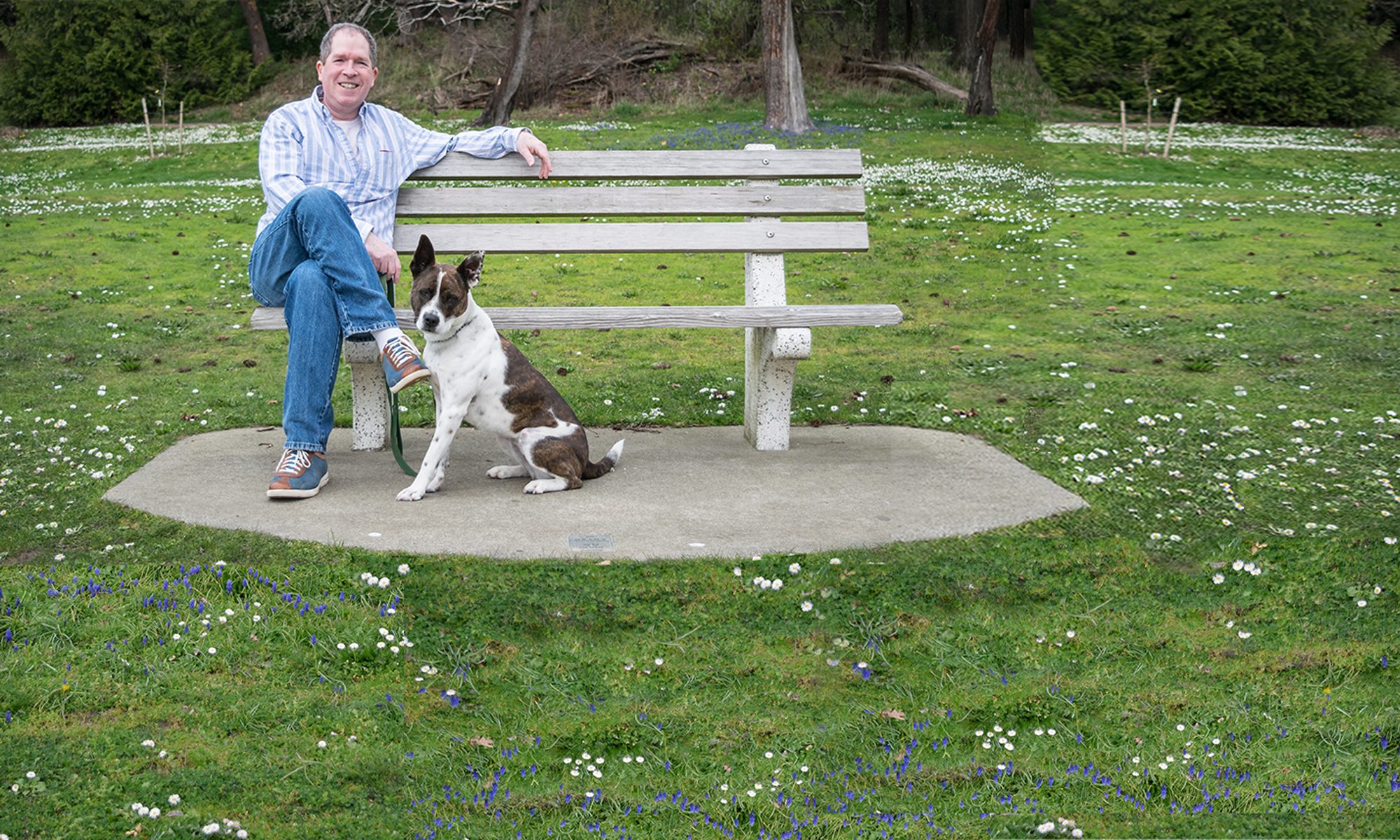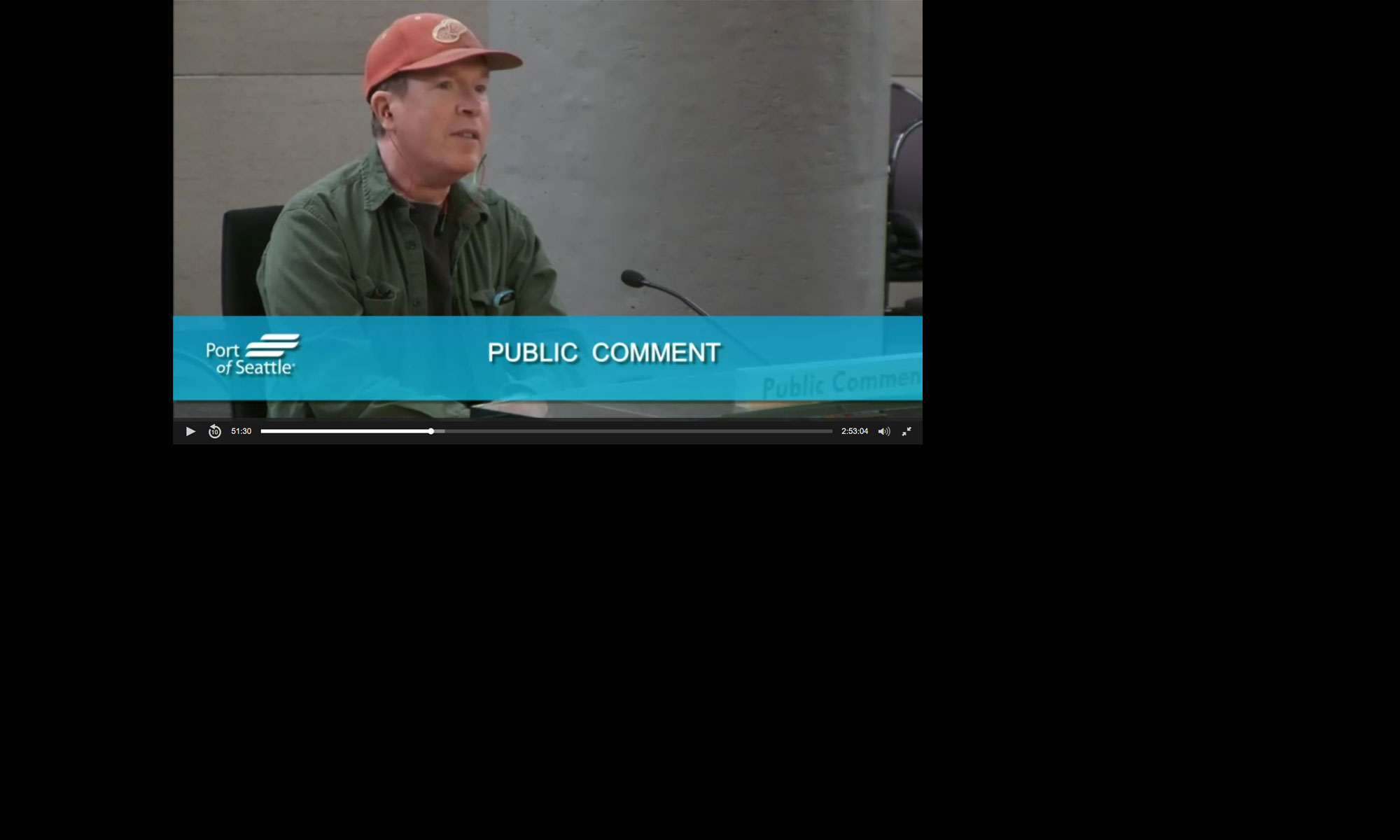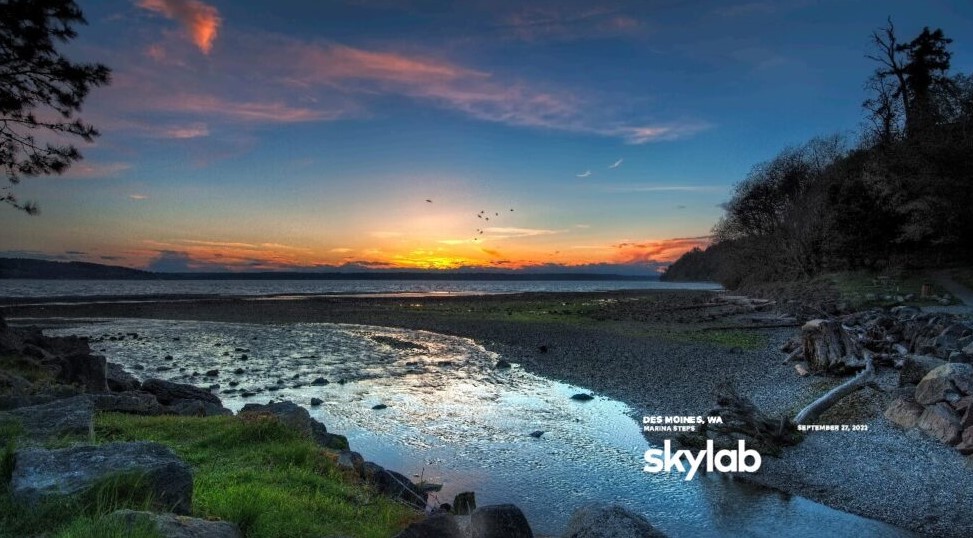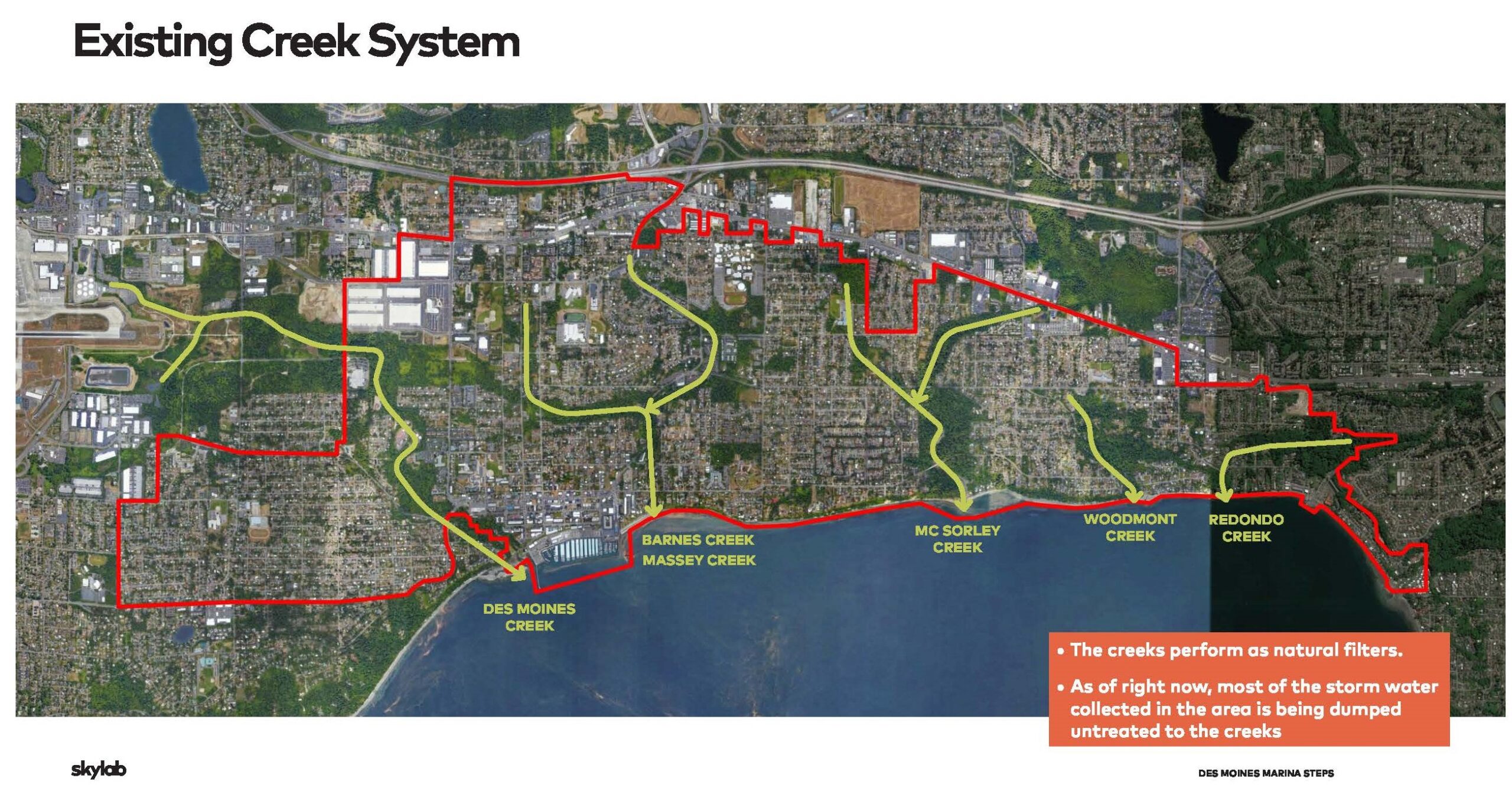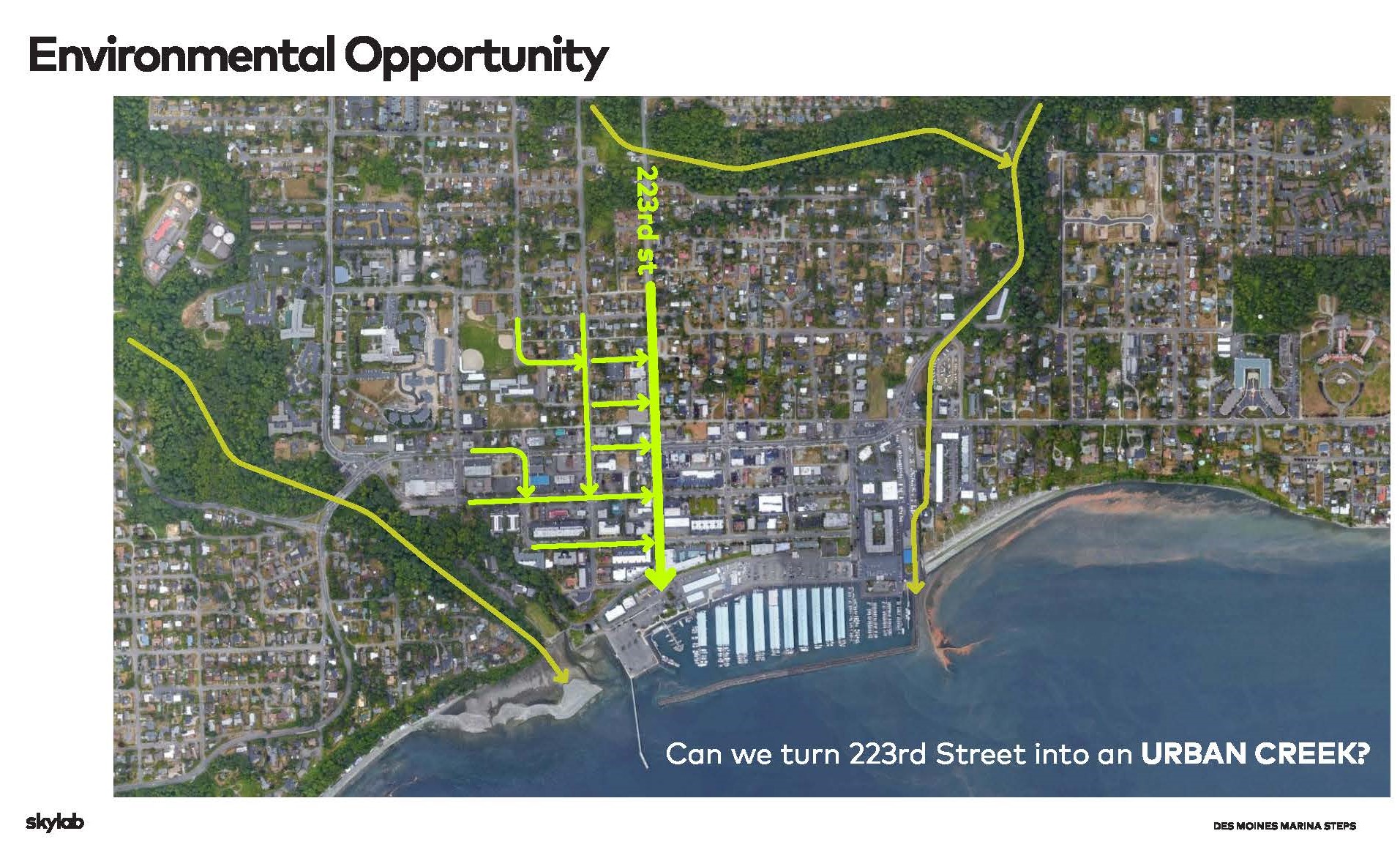I’m pleasantly surprised to hear that there is a lot of interest in the whole ‘bioswale’ and ‘urban creek’ discussion from the September 27, 2022 Marina Town Hall. Because nothing gets me excited quite like having a few drinks and talking about drainage. 🙂
So, in my 223rd Explainer, I told you that a main part of the Skylab plan was to create an urban creek. It actually takes up almost twenty five percent of their presentation brochure.
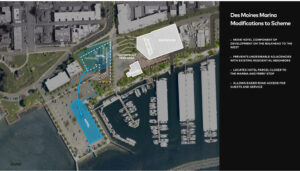 But at the time, frankly, all anybody seemed to give a damn about was Page 32!!!! 😀 I also made light of it (just a little bit) because the whole ‘urban creek’ idea seemed then, and still does now, slightly over the top.
But at the time, frankly, all anybody seemed to give a damn about was Page 32!!!! 😀 I also made light of it (just a little bit) because the whole ‘urban creek’ idea seemed then, and still does now, slightly over the top.
But in November 2022, the Council was informed that our request of the State for a $300,000 grant to do a study had been approved. And the thing I’ve learned time and again is that once you start spending money, no matter how ridiculous the idea, it’s no joke. Let’s see what you think.
By the numbers
I want to stipulate that I am completely ignoring the pages with all the aesthetic possibilities. For today I’m only talking about the practicalities of storm water management. Let’s use Skylab’s document to do this, starting with Page 6.
Here is the existing creek system. It’s a blessing to have so much fresh water. It’s also a curse in terms of management–which for homeowners, means drainage. As I said, I could spend all day talking about the wonders of fluid dynamics in the natural world, but what matters for this discussion is where they exit into Puget Sound.
Now, here is the current man-made drainage system, managed by our Des Moines Surface Water Management (SWM) that would power an urban creek on 223rd. Our forebears spent a considerable amount of effort building a grid to channel about a bajillion gallions ( 😀 ) of water every day into a few main paths.
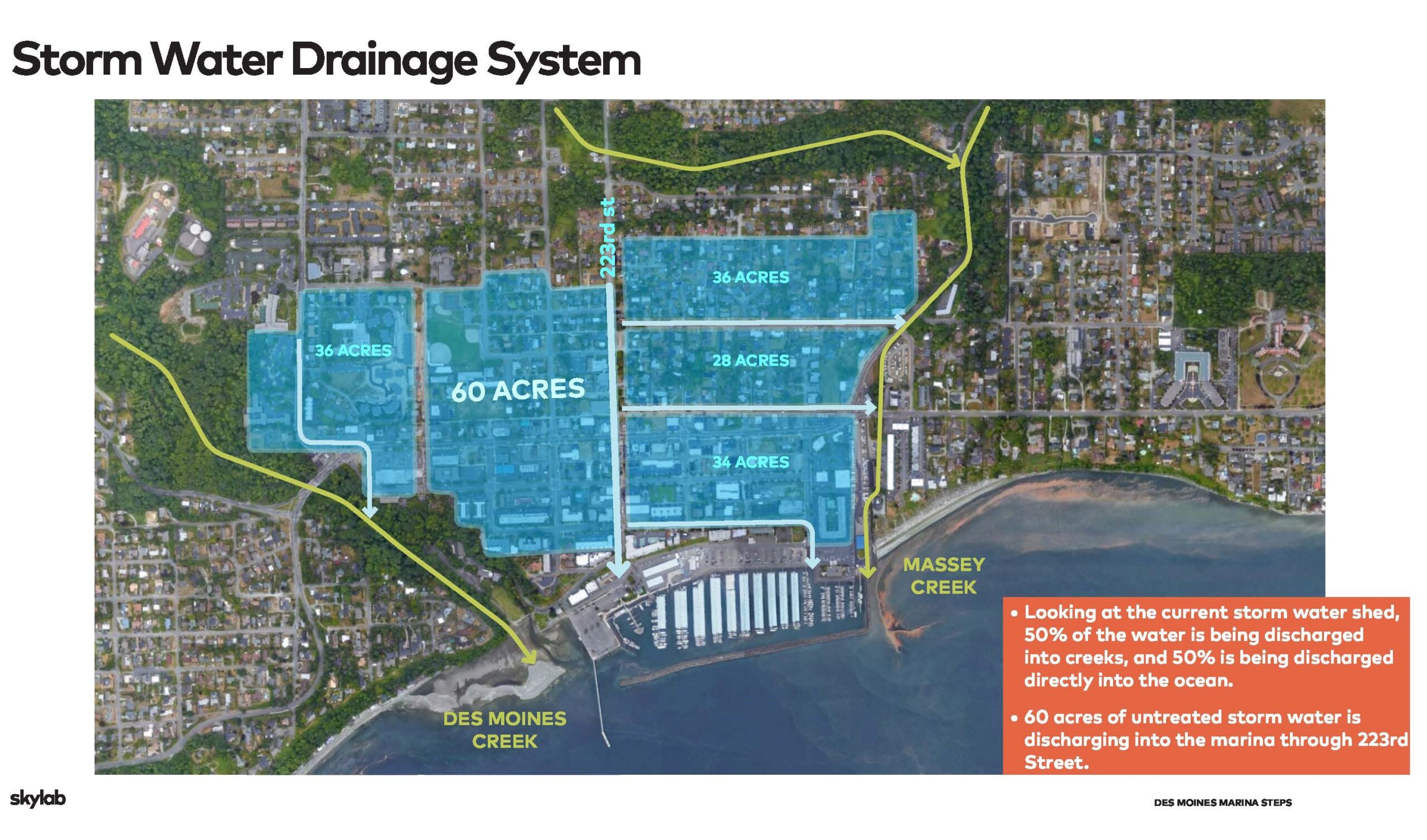
I assume this graphic is derived from the City’s SWM Map, because the overall flows match.
The trick is: how do we re-jigger that system to direct all that water into an urban creek along 223rd. That seems like it might be, what we call in the biz, a non-trivial task. And if you do look at that SWM Map, perhaps you’ll see why I had trouble taking it seriously for a while.
Here is Skylab’s ‘blue sky’ on the underlying system that would need to be engineered, built and then managed.
Get it? A bunch of water that is now going west into Des Moines Creek would be re-directed south and plumbed into a new central line down 223rd known as the ‘urban creek’. If this drawing is to be used a real guide that means new plumbing not merely on 223rd, but on every avenue from Marine View Drive down to the Marina Floor.
That seems like a lot of plumbing. 🙂
Cost/benefit Analysis
And that puts me (Mister Environmentalist) in an awkward position. True environmentalism is, like everything else about costs and benefits. This system will cost a lot, both to build, and then perhaps to manage, as an ongoing system.
I understand the environmental arguments in the brochure. However, let’s say the cost is (x) millions to build and then another (y) millions to maintain on an ongoing basis–above and beyond our current SWM grid.
Could that money not be used for other, much greater environmental benefits? (Oh, I dunno, just blue skying here… like with… er… the airport! 😀 ) But also, with an equivalent amount of moolah, we could do waaaaaaaaay more for ‘the environment’ by helping residents shift away from fossil fuels in various ways.
Speaking more broadly, what could that SWM money also be used for? We have an aging grid that will definitely need some major upgrades very soon. And then there are the King Tides and Climate change. Drainage in Redondo? At the Beach Park? Urban flooding projects in your neighbourhood?
And that’s just within the ‘SWM’ domain. Speaking even more broadly, is an urban creek, costing (x) to build and (y) to maintain, the single best use of public money in any context? Roads? Public safety? Programs for kids? Anyone? Ferris? Anyone? 😀
These are real questions. Because the truth is, there is nothing particularly wrong with our current system other than the fact that it is old. Could it better? Sure. Everything could be incrementally better. But it has the benefit of actually working. And we’d be spending a ton of money on one area of Des Moines, while the rest of town also has significant long-term SWM requirements.
Other People’s Money
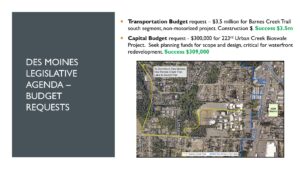 Some of it we will get from grants. Which sounds fantastic. As I said, at our November 17, 2022 meeting, our lobbyist reported that we had already received approval on a $300,000 grant from the State to study how such a thing might work. This grant is part of a general appropriation so it has no specific plan; it’s a true feasibility study and Skylab’s rendering is not an engineering drawing.
Some of it we will get from grants. Which sounds fantastic. As I said, at our November 17, 2022 meeting, our lobbyist reported that we had already received approval on a $300,000 grant from the State to study how such a thing might work. This grant is part of a general appropriation so it has no specific plan; it’s a true feasibility study and Skylab’s rendering is not an engineering drawing.
But here’s the thing I keep trying to tell people about grants. The grant you get is almost always another opportunity you won’t get. There is only so much State, County and Federal money. If you ask for $1,000,000 for (x) that takes you out of consideration for projects (a), (b), (c) and (d).
Just asking for $300,000 to study this thing is $300,000 we could not use to build something else.
For example, we went to the State to get $4,000,000 to fix the seawall. Hurrah! “Other people’s money!” But that was $4,000,000 we could not get to do something else (like buy the Masonic Home, build a Community Center, or another park, fix some roads, etc., etc., etc…
Fixing that seawall was our responsibility. Residents and people paying for moorage all those years (rightly) thought that a portion of the monthly fees were already going for maintenance.
The dollar you waste…
The funny thing is that my colleagues embrace their ‘fiscal conservatism’. Sometimes I feel like I’m the only real ‘fiscal conservative’ on the Council.
Channeling my father-in-law here…
When you mis-spend a dollar, you actually waste two. The dollar you spent on the wrong thing and the dollar you won’t have to spend on the right thing.
Why you have to be cranky about these things…
Because most of you only follow government here when something affects you personally, you don’t know how much short-term thinking affects local government.
- We have a habit of reacting to immediate frustrations. And frustrated people make impulsive decisions. In this case, all the frustration about “becoming a Destination!” if you’re into this notion, and “No Hotel!” if you’re not. Either way, we tend to ignore things like “storm water” that cost an absolute fortune.
- We also have a habit of repeating the same mistakes over and over. People cycle in and out a lot. Since most people are not following along, that makes it easy to propose bad ideas that were rejected ten years ago and then twenty years ago again–like that ferry.
- It’s not our retirement money. Almost none of us (residents or electeds) will suffer from long-term financial mistakes we make now. That gives us powerful incentives to spend every last dime, while we have it, opt to “wait until it breaks” in the distant future, and leave it to those saps to beg for another bailout. In the words of a former Mayor, “Why worry? None of us will be around, anyways.”
Blue sky?
One last thing. I have no idea how much this thing might cost. That’s what the $300,000 study is for. And I acknowledged that the Skylab drawing was a ‘blue sky’ and should not be considered a real engineering drawing.
However, that Skylab drawing did not come from nowhere. Someone did at least some preliminary work to get to that rendering. And the same can be said for the number ‘300,000’. The City asked for a very specific amount of money to do that study and that also required some preliminary knowledge. So the fact that it costs $300,000 to study says something about the size of the eventual projects.
So, this article could be condensed into one sentence: I think we should have a cost estimate of this urban creek proposal–even if it’s out of the clear blue sky. Now.
